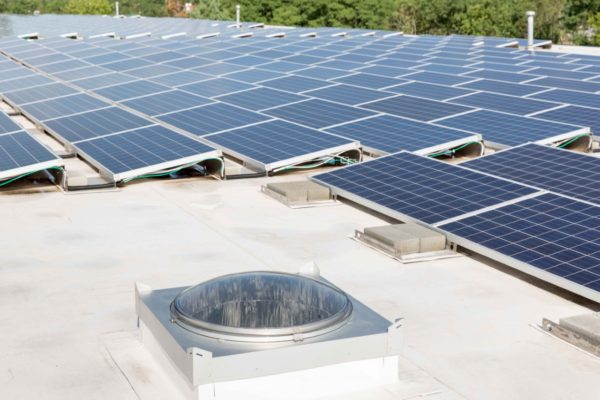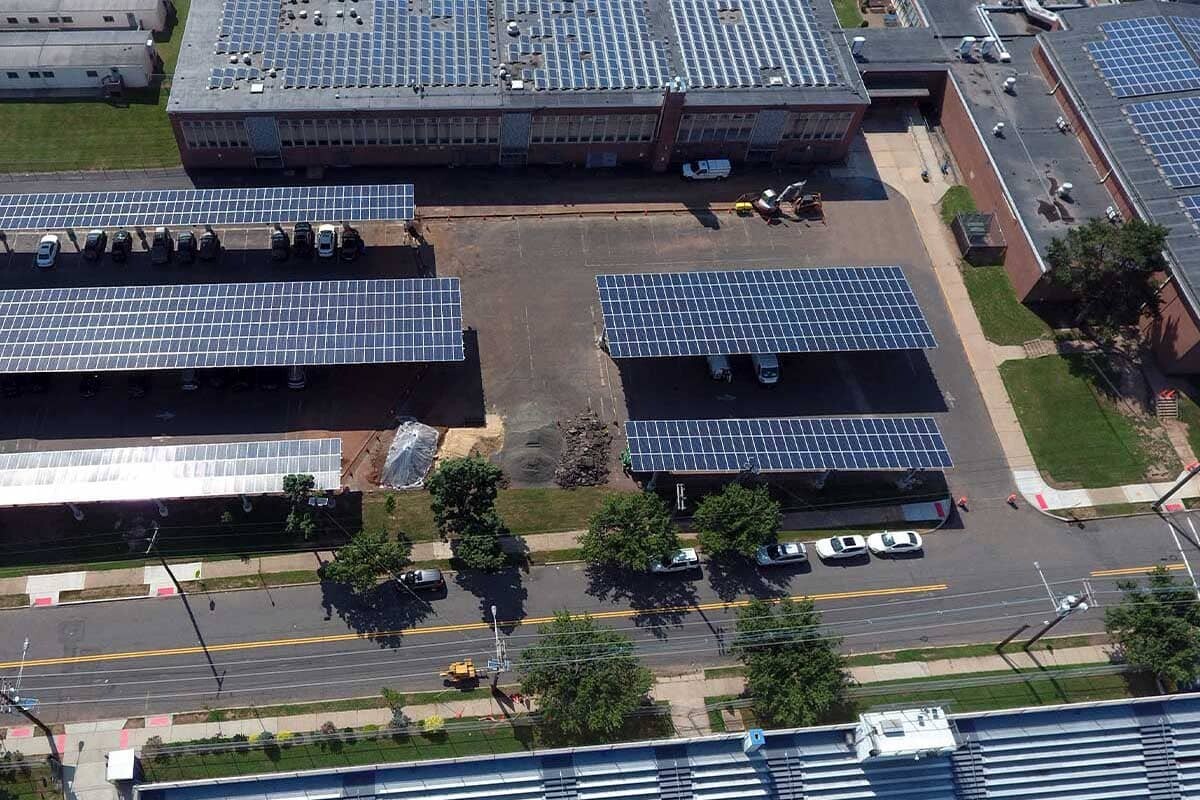Distributed rooftop solar PV comes with numerous benefits, be they financial, environmental, or for grid resilience. Another benefit that Pfister Energy places focus on is the human element.
In addition to performing work as a long-standing commercial and industrial solar engineering, procurement and construction firm based in New Jersey with a national presence, Pfister Energy adds a few more elements to its projects to make them stand out from the competition. Taking experience from a long career in roofing, Wayne Pfisterer moved into solar about 20 years ago, and has since added numerous ancillary services to boost the value of renewable energy for his customers.
Early on in his solar story, Pfisterer’s company, like all others starting out in the relatively new field of photovoltaics, was highly reliant on federal and state incentives to deliver a valuable proposition to his customers. At the time, he had about 3 or 4 employees, and uncertainty caused by the potential of incentives drying up, Pfisterer pivoted, adding energy efficiency services to his company.

Image: Pfister Energy
“Growing up, I got yelled at if I left a light on in the other room,” Pfisterer told pv magazine. “I always thought it was a little wasteful to put solar on an inefficient building.”
So, Pfisterer’s company got to work on new solutions for his customers to expand beyond PV on roofs and carports. The company installs daylights in factory buildings, a device that brings in electricity-free natural light that doesn’t let in or out unwanted thermal changes. The team has also installed green roofs, planting vegetation on an otherwise dead space, which absorbs excess heat and helps the solar array perform at a more ideal temperature. It also extends the life of the roof by protecting it from UV rays. Solutions like these are both proven to have beneficial impacts on worker health, bringing a more natural environment to the factory floor.
The company also installs rainwater solutions that repurpose rain for irrigation or greywater applications. Such a system is in operation today at the Goodfellows Airforce and a Colgate Palmolive facility.

Efficiency is chief of mind for Pfisterer Energy, too. The company installs energy-efficient measures like insulation, efficient lighting, and has done work in the building-integrated photovoltaics space. Pfisterer said this has led to winning bids versus competitors that all offered a vanilla 1 MW array, while his 750 kW array offered a better return on investment to his customers and was able to meet their needs due to boosted efficiency.
Consistent policy breeds success
Pfisterer shared that in New Jersey, the incentive programs of the past were instrumental to accelerating his business. The TREC program was a very rich incentive, perhaps even too rich, he said. The problem was when TRECs went away, and a softer SREC program was launched, customers had become accustomed to unbelievable deals, like projects that would entail only a three-year payback. Pfisterer believes consistency and predictability would have done better for the industry. A long-term, reasonable incentive that smoothed out these sudden booms and busts in the market would benefit all involved.
This sentiment of wanting consistent policy is felt today at the national scale, too. The antidumping investigation of four Southeastern Asian countries that supply 80% of US solar modules has frozen the industry in its tracks, especially at the utility scale, due to untenable levels of uncertainty and risk.
In an interview with pv magazine, utility scale developer SOLV Energy CEO George Hershman said the antidumping investigation was a “baseless” claim and seemed to be a poorly veiled and poorly planned attempt to boost US manufacturing. However, in the short term, inconsistent policy does not work. “We need to align around legitimate industrial policy to support manufacturing in the US,” said Hershman.
Pfister Energy’s director of estimating, Varun Harnathka said the announcement of the investigation immediately led to a 25% jump PV prices, and now prices continue to creep up every day he calls for a quote. He said that contracts from the four countries now incorporate tariff risk into their price.
“In the last week of March, panels were about $0.40/W, now they are about $.50/W. Pre-covid we were only at about $0.28/W,” said Harnathka. Pfister added that raw material prices like copper and other key elements have been driving the spike, as well.
With panel costs up 30-40-50% and still rising, Pfisterer said that his company’s unique projects that incorporate a holistic approach to efficiency may pencil out better for customers than placing the largest system possible on a roof. “Let’s look at some energy efficiency, storage, EV charging, and how we can design a net-zero electricity building,” he said.
This content is protected by copyright and may not be reused. If you want to cooperate with us and would like to reuse some of our content, please contact: editors@pv-magazine.com.









By submitting this form you agree to pv magazine using your data for the purposes of publishing your comment.
Your personal data will only be disclosed or otherwise transmitted to third parties for the purposes of spam filtering or if this is necessary for technical maintenance of the website. Any other transfer to third parties will not take place unless this is justified on the basis of applicable data protection regulations or if pv magazine is legally obliged to do so.
You may revoke this consent at any time with effect for the future, in which case your personal data will be deleted immediately. Otherwise, your data will be deleted if pv magazine has processed your request or the purpose of data storage is fulfilled.
Further information on data privacy can be found in our Data Protection Policy.